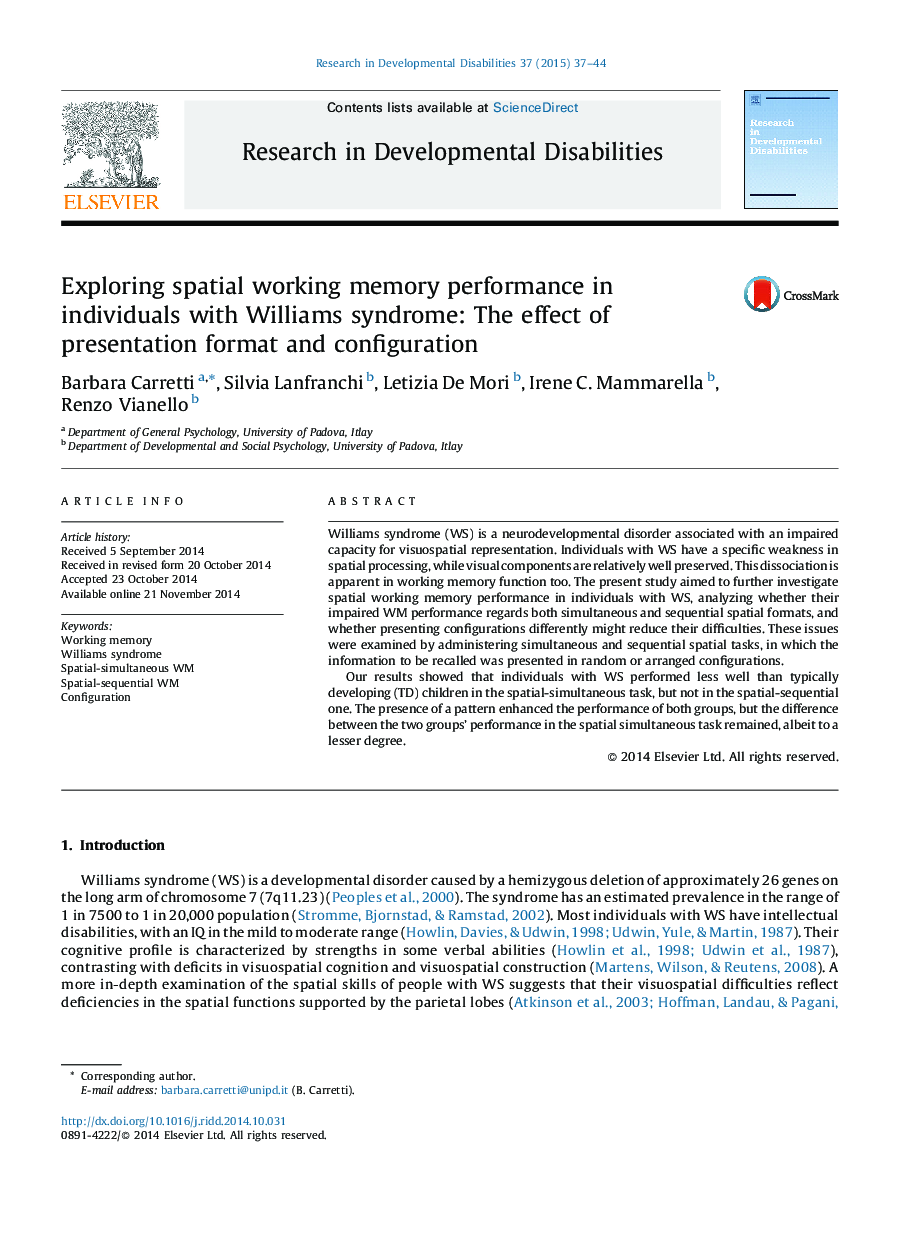| کد مقاله | کد نشریه | سال انتشار | مقاله انگلیسی | نسخه تمام متن |
|---|---|---|---|---|
| 371304 | 621909 | 2015 | 8 صفحه PDF | دانلود رایگان |
• Results supported the distinction between spatial-sequential and spatial-simultaneous processes in visuospatial working memory.
• The architecture of the spatial WM in WS has the same characteristics as in typically-developing individuals.
• A patterned configuration enhanced the performance of WS and TD groups, reducing the gap between them in the spatial-simultaneous task.
Williams syndrome (WS) is a neurodevelopmental disorder associated with an impaired capacity for visuospatial representation. Individuals with WS have a specific weakness in spatial processing, while visual components are relatively well preserved. This dissociation is apparent in working memory function too. The present study aimed to further investigate spatial working memory performance in individuals with WS, analyzing whether their impaired WM performance regards both simultaneous and sequential spatial formats, and whether presenting configurations differently might reduce their difficulties. These issues were examined by administering simultaneous and sequential spatial tasks, in which the information to be recalled was presented in random or arranged configurations.Our results showed that individuals with WS performed less well than typically developing (TD) children in the spatial-simultaneous task, but not in the spatial-sequential one. The presence of a pattern enhanced the performance of both groups, but the difference between the two groups’ performance in the spatial simultaneous task remained, albeit to a lesser degree.
Journal: Research in Developmental Disabilities - Volume 37, February 2015, Pages 37–44
